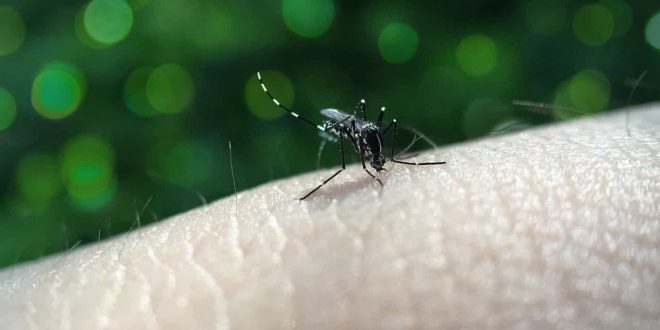A Staggering 3.35 Million Cases of Dengue fever
Dengue fever is wreaking havoc in the Americas, causing a significant strain on the region. In 2023, the continent has witnessed the highest number of dengue infections in the past five decades, surpassing a staggering 3.35 million cases. Tragically, there have been 1,567 reported deaths attributed to the disease, as reported by the Pan American Health Organization (PAHO). This alarming outbreak has hit countries like Mexico, Bolivia, Peru, and Brazil with unprecedented case numbers. Argentina, in particular, is facing its most lethal outbreak in history, with a 160-fold increase in patients compared to the entirety of 2022. The driving force behind this health crisis is the Aedes aegypti mosquito, an insect highly adept at adapting to human environments.
The Aedes aegypti mosquito
The Aedes aegypti mosquito thrives in stagnant water, with a preference for clean water sources. It lays its eggs in containers, pots, or even discarded items that collect rainwater, creating small breeding sites. This mosquito is drawn to dark-colored objects, and it’s the females that inflict bites. Recognizable by their black-and-white legs, these dengue fever carrying mosquitoes breed outdoors but frequently return indoors. Despite its seemingly innocuous name, this “little fly” is responsible for an estimated 440,000 deaths annually, according to the World Health Organization (WHO). With the ongoing impact of climate change and rising temperatures, this insect is adapting rapidly and extending its presence into new territories.
The Aedes mosquito is a vector for arboviruses, including dengue fever, Zika, and chikungunya, for which there are still no effective vaccines. Consequently, public health campaigns have primarily focused on preventing mosquito bites to curb the spread of these diseases. This is where the release of mosquitoes infected with Wolbachia bacteria comes into play. Honduras is set to become the first Central American country and the second on the continent, following Colombia, to implement this method. While not a silver bullet against dengue fever, it represents a promising new approach, especially when combined with larvicides and household insecticides.

Doctors Without Borders
Inside a specialized insectarium in Tegucigalpa, where the ambient temperature is set to 29 degrees Celsius, hundreds of mosquitoes have been carefully nurtured. They’ve been housed in containers with water, powdered liver (a typical fish food), and activated charcoal for ten days. These insects have matured from tiny eggs and pupae into full-grown adult mosquitoes under the watchful eyes of caregivers from Doctors Without Borders.
Occasionally, these dedicated individuals even offer their arms for the mosquitoes to feed on, as female mosquitoes require blood to reproduce. All these efforts are part of an ambitious project involving Doctors Without Borders, the National University of Honduras, the Ministry of Health, and the World Mosquito Program to combat one of the region’s most stubborn endemic diseases the dengue fever.
Wolbachia is a naturally occurring bacterium found in approximately 60% of insects, including dragonflies, bees, and butterflies, but not in the Aedes aegypti mosquito. For over 15 years, the World Mosquito Program has been extracting Wolbachia from fruit flies and introducing it into Aedes aegypti eggs. This bacterium effectively prevents the transmission of dengue, even if the mosquito carries the disease.
The initial release of modified mosquitoes occurred in northern Australia more than a decade ago, resulting in the region being declared “dengue fever-free.” Similar success stories have been seen in Indonesia, where dengue incidence decreased by 77%. Doctors Without Borders affectionately refers to these mosquitoes as “safe mosquitoes” because they may bite, but they do not cause the fever, muscle pain, and hospitalizations associated with dengue.
The Next Phase of the Plan
The next phase of the plan involves allowing mosquitoes with Wolbachia to mate with local populations. Two scenarios may occur: if a female mosquito carries Wolbachia and mates with a non-infected male, the next generation will inherit the bacterium, making them incapable of transmitting the dengue fever virus. If the situation is reversed, with an infected male and a non-infected female, the eggs may not hatch or develop into weak adult mosquitoes.
The goal is not to suppress the mosquito population but to replace it, preventing an ecological imbalance. In areas with high mosquito densities, the proportion of mosquitoes with Wolbachia can reach up to 98%. However, achieving this level may take around three years and can be sustained for several decades, as indicated by mathematical studies estimating between 60 and 80 years without dengue-carrying mosquitoes.
 The Argus Report Read about it!
The Argus Report Read about it!



